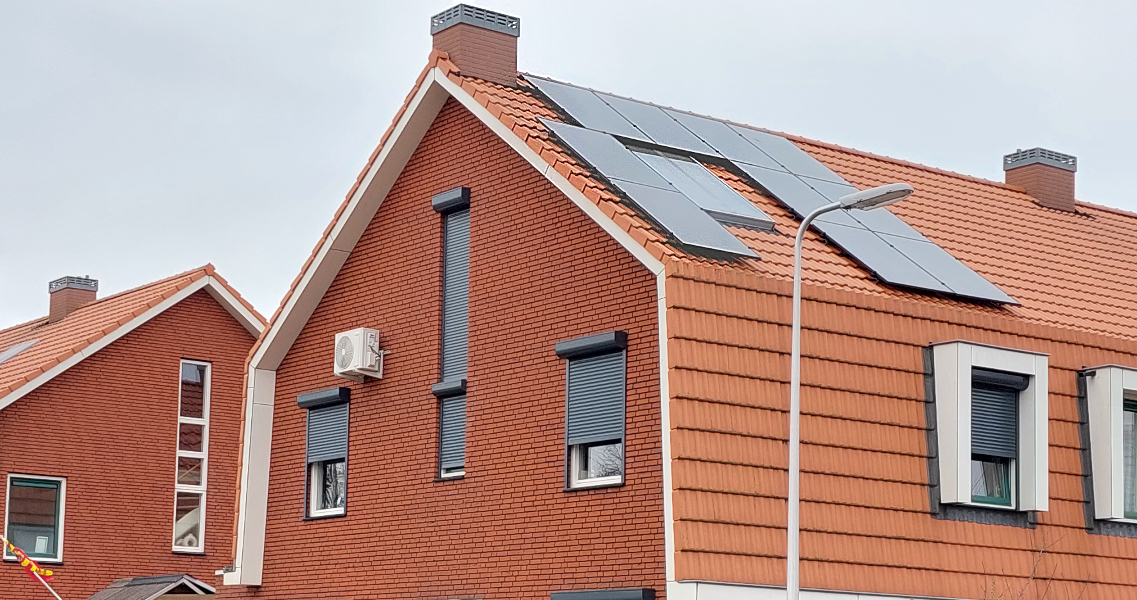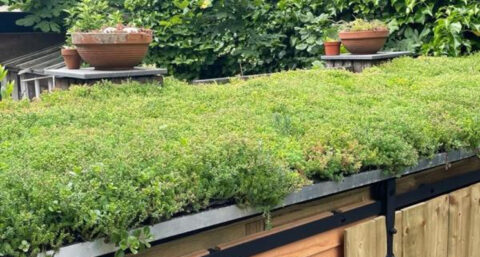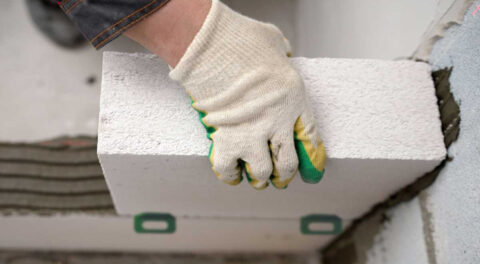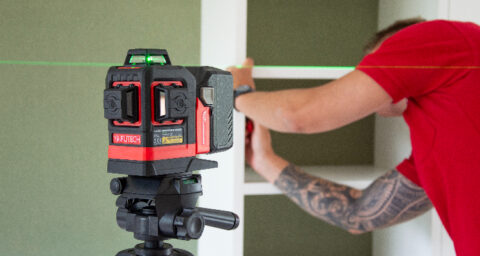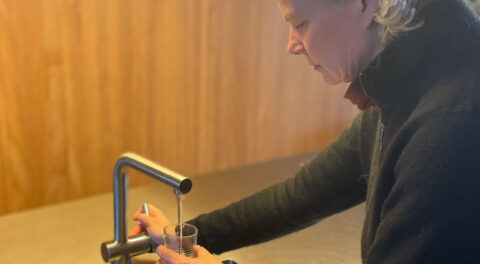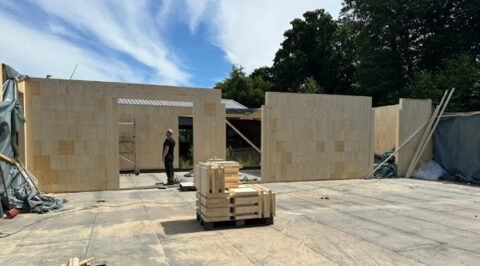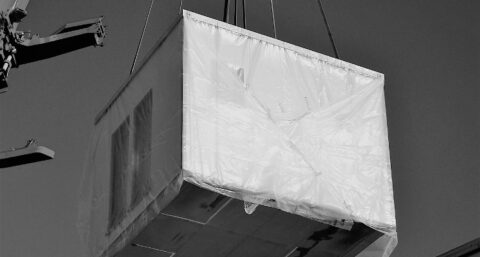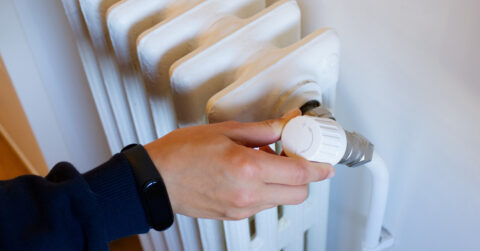You see solar panels on roofs much more often than solar collectors. Still, a solar water heater is a good idea for heating water. A modest installation is needed for tap water. In combination with central heating or a heat pump, it is also possible to use a solar water heater to heat a home
What is and what is a solar water heater for?
A solar water heater is a sustainable technique for heating water. In the Netherlands, solar water heaters are mainly purchased to heat shower/bath water. The required roof area does not have to be very large. The hot water requirements determine the size of the collector and the boiler tank. A large family uses more hot water than a single person; a shower with an economy shower requires less hot water than a rain shower or bathtub. A collector of 1 m2 with a 40-liter storage tank is roughly assumed per person. In principle, a household of four can make do with a collector of 4 m2 and a storage tank of 160 liters.
How does a solar water heater installation work?
A complete solar water heater installation consists of a number of components that together ensure that the water in the boiler tank is heated with the help of the sun. First, these are the solar collectors, which are usually located on the roof. The collectors consist of tubes through which a liquid flows. The sun's heat heats the liquid. A pump propels the liquid through a pipe circuit to the boiler tank. The heat exchanger in the boiler vessel transfers the heat to the water in the vessel. A controller controls the pump based on the measured temperature.
Is an afterheater always needed?
A solar water heating system intended for domestic hot water always requires post-heating. For example, if you take a long shower or take many showers in a row, the hot water in the tank can run out. And if the sun shines little or not at all for a while, the water in the tank will not come up to temperature. In those situations, post-heating ensures that hot water is still provided. A conventional water heater or a central heating boiler can act as an afterheater.
Is it possible to heat an entire house with a solar water heater?
Yes, you can with a solar water heater combo system. This produces enough hot water for use in the bathroom and kitchen, and to heat the house. Such a combi system consists of solar collectors, a large buffer tank and an integrated central heating burner. The system works especially well if there is low-temperature heating in the home, i.e., wall and/or floor heating. High-temperature central heating systems would require reheating far too often. This is inefficient and unnecessarily expensive.
Can a solar water heater be combined with a heat pump?
Yes, it can and is an environmentally friendly choice that can heat the entire house. A combined system consists of solar collectors, a large buffer tank and a heat pump. The solar collectors heat the central heating and plumbing water when there is enough sun. The hot water is kept at about 50 °C in the buffer tank. This large vessel (as much as 1,000 and sometimes more liters) is connected to the central heating and plumbing systems. If the solar boiler cannot get the water in the buffer tank to the desired temperature, then the heat pump is the after-heater for DHW and central heating.
Photo: the combination of solar collectors and PV panels is also possible
What types of collectors are there?
There are two types of collectors, each with a different appearance. The best known is the flat plate collector. It looks a bit like a solar panel. Under the flat glass plate are the pipes through which liquid flows. A vacuum tube collector or heat pipe collector consists of a number of double-walled glass tubes containing the liquid. Heatpipes are a bit more expensive to purchase but, because of their shape, they capture more sunlight and thus have better efficiency. Another advantage of heatpipes is that the number of tubes is variable. This makes it easy to expand the volume of the collector.

What is the best placement on a pitched roof?
The collectors or heatpipes preferably need direct sunlight. Oriented to the southwest, south or southeast, the installation gives the best efficiency. The angle of inclination should be between 20 and 60 degrees. Note that a solar water heater installation weighs quite a bit. The roof must be able to support the collectors, and the installation space for the boiler or buffer tank (often the attic) must have a solid floor.
Installing solar collectors generally does not require a permit. It is important, however, that they do not protrude over the edge of a sloping roof. On a national monument or in a protected village or townscape, collectors are usually not allowed to be installed. Sometimes it is then allowed at the rear of a property.
Can a solar water heater also be installed on a flat roof?
Yes, it can be done just fine. Both flat plate collectors and heatpipes can be installed on a flat roof. A big advantage is that you can determine both the angle of inclination and the direction. A 45-degree setup is ideal and the direction is again to the southwest, south or southeast.
It is important to check the load-bearing capacity on a flat roof as well. The roof will have a frame that holds up the collectors at a certain angle. The whole thing catches a lot of wind, so a ballast plan is needed. There are also systems where the frame is attached to the
roof structure is attached. With such a system, ballast is not necessary. Be careful not to place the collectors too close to the eaves, as the wind always has more power there.
Does a solar water heater also work in winter?
Yes, the efficiency is a bit less, about 50%. But because of the special liquid in the system, the solar water heater generates heat even when the sun is not shining hard, or when it is cold outside. If the solar water heater still does not provide enough heat, the after-heating system or the integrated central heating burner will step in.
A solar water heater will only not work if there is snow on the flat plate collectors (with heatpipes, snow is not a problem because it just falls through). Snow blocks daylight. If the collectors are in an accessible location, the resident can clear them of snow. If not, just wait until the thaw sets in.
Do solar water heaters need maintenance?
Maintenance of a solar water heater is not mandatory, but it is recommended. Have you installed a solar water heater at a customer's home? Then you can offer periodic maintenance as a service, perhaps at the same time as the maintenance of the central heating system. When servicing the solar water heater, check the anode and system pressure. Remove any scale in the storage tank and check the pump for leaks. Is there glycol in the system? If so, check the tightness.
Regular maintenance ensures the proper operation of the solar water heater system.
